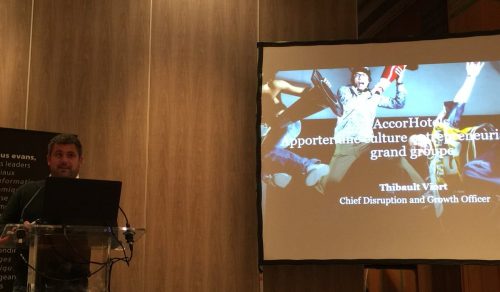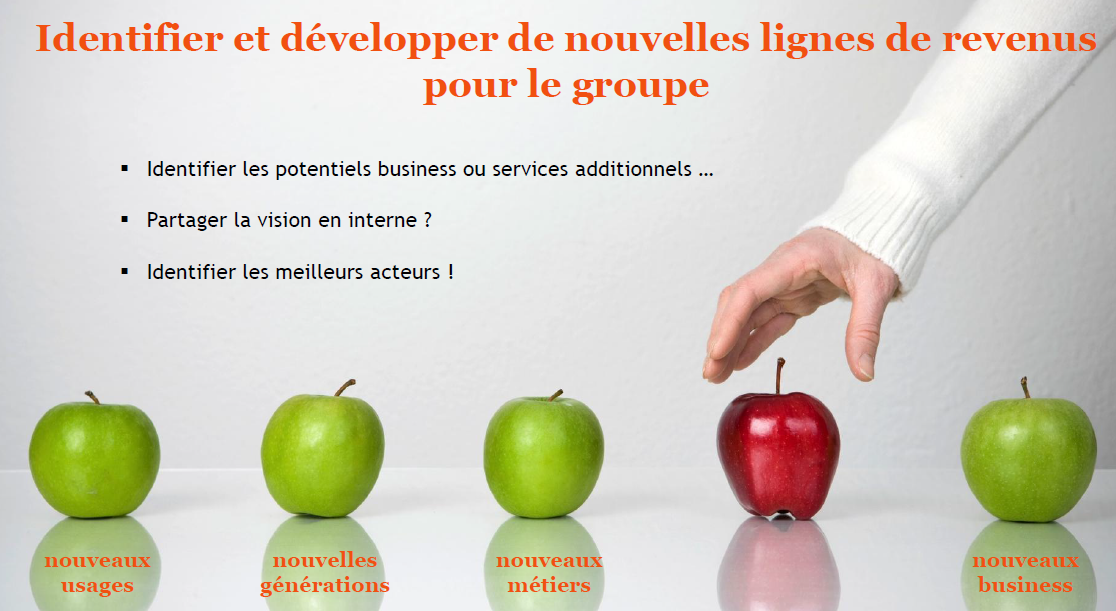Romancing the New Business Model- Valutrics
by Nicolas Bry
As mentioned in the 2017 open-innovation center, innovation units with a new business model focus are catching interest. Here are a few examples:
Innovation units with a business model focus
Kamet is a startup studio initiated by AXA in 2015, and funded with 100 m€ for 5 years (AXA is a minor stakeholder). It aims at creating the new disruptors of the insurance industry, and incubating these InsutTech ventures, that will eventually join AXA group.
![C7gqSCqXwAA9Fpa[1]](https://nbry.files.wordpress.com/2017/05/c7gqscqxwaa9fpa1.jpg)
Stéphane Guinet, Kamet’s founder, presents Kamet as a startup that builds startups. 100 people already work at Kamet (Paris, London, and Tel Aviv): 85 of them, mostly externals, are entrepreneurs in residence.
Why so many entrepreneurs? Kamet has actually a specific process to develop new business models: every 6 months, it unearths 40 ideas for new businesses; ideas come from AXA group, market watch, or venture capitalists; it selects 8 of them, then staffs corresponding projects with entrepreneurs, and starts building prototypes, and design business models. 4 of them are shut down following this milestone, and 4 continue for the next 6 to 8 months. It takes one year to give birth to a startup. Just like a startups studio, akin eFounders

With Kamet, AXA takes disruption seriously, and tries to give Kamet an unfair advantage competitive with Kamet-AXA bundle, leveraging AXA skills and database.
Axes of investigation are about revisiting risk analysis or healthcare back-office. First Kamet seeds are:
- Giving access to best French medical doctors to expats, and linking foreign travelers with their regular doctors through videoconferencing (Qare);
- Offering drivers to replace their tires, collecting their vehicle at the office (Fixter, the UBER of car maintenance, is funded by AXA with m€ 6);
- Reinventing occupational health-care with data (Padoa is funded by AXA with m€ 5).
AXA benefits from a 30-day right of first refusal at the first capital round.
Accorhotels has hired in April 2016 a Chief Disruption Growth Officer, Thibault Viort, to develop growth opportunities.

But what is the role of a Chief Disruption Officer? Thibault describes 5 missions:
- Developing a culture of agile innovation through 6 levers: awareness of emergence, understanding of value chains, mix of cultures, crossing ideas, pragmatic answers, and acting on the ground;
- Scouting new business lines resulting of new usages / coming generations / know-hows professions, enticing an internal dynamic, and embarking best players;
- Facilitating a startups ecosystem, reinforcing interactions with startups that re-invent the sector, and fostering initiatives from Accor’s units to liaise with startups; Thibault’s team uses StartupFlow.io tool;
- Accelerating new business initiatives, and intrapreneurship: task-forces helping business units in the opportunity assessment, rationalizing new initiatives across units, linking with relevant startups, and supporting business units teams; Accorhotels employees are invited to apply for the new business activities;
- Overseeing investments or acquisitions in emerging activities.

Examples of new service: using a chatbot set-up by a startup, to book a room at Accorhotels.
Examples of investments: OneFineStay, an high-end Airbnb competitor, and John Paul, the digitally-enhanced concierge service.
RWE innovation hub wants to unfold the UBER of energy. Inken Braunschmidt, leader of this 80 people unit created in 2014, is here to think non-utility ideas. “Our task is to find and develop new business models”, she claims in Energypost.eu. “It does not mean we stop RD. It’s not about technology or software either. It’s about business models that put the customer in focus, that use insights based on data”.
What is the process? “We follow a lean start-up approach. So we talk about 1, 3, 6, 9 months to get to a minimum viable product, a prototype. We work on proof-of-concept in little start-up teams. To define our areas of investigation, we looked at the telecoms industry, the electronics industry (Philips, Samsung etc) and of course at start-ups, we looked at Google and Nest.” The result is a focus on 4 domains, called the lighthouses:
- Big data;
- Disruptive digital business models like Uber and Airbnb;
- Smart in and around the house (including the Internet of Things);
- Urban concepts, solving problems for mega-cities, from electricity and communications to mobility and logistics.

For each domain, RWE assessses whether it has already specific assets: for instance, when it comes to mobility, RWE already has the technology and know-how on charging infrastructure. To evaluate whether it can make a difference with a startup, RWE takes into account 3 assets: its 23 million customers base in Europe, IP, technologies and platforms up and running, and support in areas where a start-up does not typically have resources for, such as regulatory and legal experts. These assets also make RWE an interesting partner for start-ups.
We could also remind us of BIG, Breakthrough Innovation Group at Pernod Ricard, whose founder, Alain Dufossé, we interviewed some time ago. Its way to nurture innovation projects with platform of opportunities was really impressive.

An approach to unfold new business model
Combining the previous experiences, we suggest a 6 steps iterative approach to carve new business streams for your company:

- Top management support: getting management involvement in the long run, being present at key milestones: 6 months, one year, and so on;
- Scouting: observing usage of customers, non-customers, of coming generations, detecting emerging profession and skills, benchmarking startups, and industries, crossing with company’s assets (customer base, technologies, expertise), and defining lighthouses, or platform of opportunities
- Ideation: generating 40 to 50 ideas, and extracting 8 of them; ideas can come from market watch, from VCs, or from the core corporation, on a regular basis, or during a dedicated creative workshop involving business units; ideas can then be connected with business units initiatives, and needs;
- Staffing: building little start-up teams with external entrepreneurs or intrapreneurs, potentially mixing employees with startups; or providing a task force accelerating business units initiatives; partnering with startups, or investing in startups. Once the team is on tracks, inviting intrapreneurs to apply to new businesses, extending the resources;
- Executing: pursuing a portfolio of 8 innovations with lean startup, building MVP to prove the concept, completing business model loop; after 3 months, reducing the portfolio to 4 innovations that you will bring to market;
- Show me the money: achieving first sales, revenues, and customers, scaling-up, and iterating with management support at key milestones.
Wait! Before you go…
